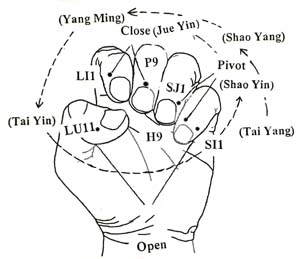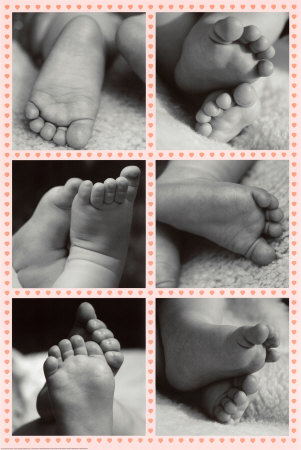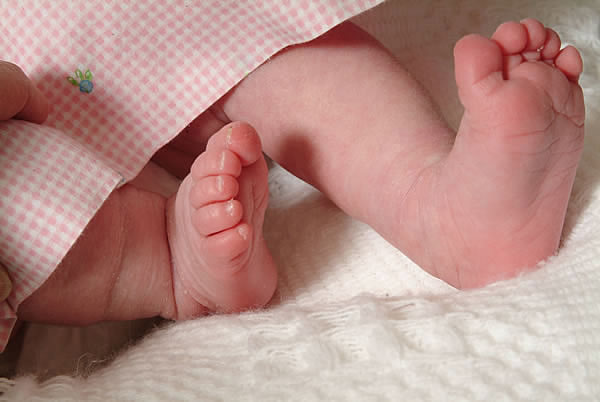Internal martial arts, theatricality, Chinese religion, and The Golden Elixir.
Books: TAI CHI, BAGUAZHANG AND THE GOLDEN ELIXIR, Internal Martial Arts Before the Boxer Uprising. By Scott Park Phillips. Paper ($30.00), Digital ($9.99)
Possible Origins, A Cultural History of Chinese Martial Arts, Theater and Religion, (2016) By Scott Park Phillips. Paper ($18.95), Digital ($9.99)
Watch Video: A Cultural History of Tai Chi
New Eastover Workshop, in Eastern Massachusetts, Italy, and France are in the works.
Daodejing Online - Learn Daoist Meditation through studying Daoism’s most sacred text Laozi’s Daodejing. You can join from anywhere in the world, $50. Email me if you are interesting in joining!
Balance is Key
/If someone gives me a surprise shove I will likely do a quick jump or stumble and quickly recover my balance on two feet. The same is true for most people, it’s not a special skill. No other animal can stand on two feet and take a shove with out falling down, even bears have a high falling down rate. When we learn to walk as toddlers we naturally train our dantian’s to do this complex job. The recovery of balance is lightning fast. If I contemplate the physics of it, there must be an internal counterbalance functioning unconsciously. Somehow my mass absorbs all the momentum of the push and moves my center of mass very quickly back and forth, up and down and left and right until it is directly above my feet again. Again, it is too fast to perceive. What I am aware of is the space around me, perhaps sharp objects, the surface of the ground, a wall or a tree. My guess is that if I misperceived a slanted wall as vertical, or a sloping ground as level, I might actually fall down or stumble for a bit longer. But a functioning spatial mind can make corrections very quickly. In fact, it might actually function better at high speeds. How else could we explain the ability to run through a forest down a steep hill. The spatial mind controls the dantian, as a counterweight, unconsciously and instantaneously, bringing us back to balance.
This basic function of the dantian can be transferred to higher order skills like skiing, carrying a long ladder through an obstacle course, rock climbing or gymnastics. Of course, all animals have a similar skill which they use on four feet or in the air if they are birds.
Normal humans however, only use the dantian for this one type of task. When we throw a ball, or pick up a pen to write our name, we are using our brains in a very different way. Or, like when we are rock climbing, we use the same set of balance and vertical orientation skills simply applied in a different context.
Pure Internal Martial Arts are unique because they use the dantian to respond to forces other than gravity. To paraphrase George Xu, “When you touch any part of my body, you are touching the dantian.” The best video demonstration of this I know of is this one by Ma Yue Liang:
Not everyone can learn internal martial arts (that would be communism), but proof that nearly everyone has a functioning dantian is apparent in our natural ability to recover our balance.
Yin Yang
/ I wouldn't be a martial artist at all if I didn't love the "doi!" moments where I hit my self-on the forehead because I've just realized how wrongly I've been practicing for x number of years. That's because those moments are transitions to new freedoms.
I wouldn't be a martial artist at all if I didn't love the "doi!" moments where I hit my self-on the forehead because I've just realized how wrongly I've been practicing for x number of years. That's because those moments are transitions to new freedoms.
Yinyang theory is among the most basic aspects of North Asian cosmology so I'm not going t go into it here because most of my readers already know it.
What got me excited is that I suddenly came to understand the yin and yang meridians in a way I never had before. Or rather, I put together a bunch of discrete experiences into a coherent whole. So I'll just make a list.
Zhang Xuexin taught that qi rises up the meridians on the insides and back of the legs, then moves to the yang meridians coming up the the back over the head and out along the tan side of the arms, and then comes from the palms inward along the yin meridians of the arms and down the face and then down the front of the body and then, moves down the yang meridians of legs which are on the outside edges and along the front. Kumar Frantzis taught the same thing. And generally this is part of any heaven-earth qigong series.
Liu Ming expained that meridian flow, like the flow of qi in meditation, happens by itself, of its own accord, effort only inhibits it.
Markus Brinkman, on his roof in Taiwan, explained and demonstrated channel theory as it applies to martial arts using a finger counting system. He was astonished at how fast I picked it up. I puzzled on it for awhile and did a bunch of experiments. The idea is that force is generated, defused/transformed and transmitted along specific groups of meridians in sequence. The theory is in this book: Applied Channel Theory in Chinese Medicine Wang Ju-Yi's Lectures on Channel Therapeutics.
I figured out through my own experiments that the yang meridians are better for defense and yin meridians are better for attacking. In the language of tai chi, pengjin takes force on the yang meridians, jijin issues force via the yin meridians. A corollary for this is that yin is gathered when our structure is organized towards the inside edge of the feet, yang is gathered when our structure is organized towards the outside edge of the feet.
In an attempt to reduce all structural power (jin/jing) in my body I figured out that I could put my foot down during baguazhang walking as if it were a vacuum cleaner, allowing qi to draw inward as my foot takes weight.
George Xu said to me sometime in the last year, "The yin and yang meridians have different jobs."
Anyway, all this fit together for me recently. All these things have to happen at once --simultaneously and continuously. Without this piece, we can not achieve an 'I know you, you don't know me,' situation. Without the crystal clear differentiation of the roles of the yin and yang meridians, the dantian can not do its job of meeting our opponent before our mass does.
It wasn't that hard to say, and no doubt, I believed many times over the years that I understood it intellectually and physically. But until it was happening in my body under the pressure of testing and resistance, it was just words.
There are so many ways to be wrong, it feels good to get a few more of them out of the way.
• For more background read this article on making a sandwich. Or for tai chi structure theory read this. For the concept and rationale of reducing jing/jin read here.
Baby Feet
/ Much of learning in traditional Chinese martial arts involves re-imagining. A subset of learning involves re-naming. The purpose of re-naming is to re-imagine a process or practice you are already familiar with. We could speculate that the imagination has a built in deterioration and mutation mechanism for anything which has become fixed. The imagination requires regular refreshing to function properly.
Much of learning in traditional Chinese martial arts involves re-imagining. A subset of learning involves re-naming. The purpose of re-naming is to re-imagine a process or practice you are already familiar with. We could speculate that the imagination has a built in deterioration and mutation mechanism for anything which has become fixed. The imagination requires regular refreshing to function properly.Among the latest re-naming I’m excited about is the expression “Baby Feet.” This expression refers to both the method and the fruition of practice. It is a method because I say things like, “Make sure you have baby feet when you are punching each other.” It is a form of fruition because it really isn't something you do, it is the result of completely emptying the legs of all impulses to “stay balanced” or “generate structural power.” Of course if you do that it doesn’t feel like much because you probably aren’t moving much. Only when the dantian (abdominal region of the mind) is relaxed enough to expand all the way to the ground and there is a free hydraulic flow between the two legs and that flow is controlled by movement of the dantian, not the legs, only then can you get the sensation of “baby feet.” Once you have that sensation it can function temporarily as a signal to let you know all the other stuff is active and operative.
I use to describe this sensation as “putting your foot down like pouring pancake batter on a griddle.” But that got stale when I quit eating wheat! Also the sensation started to become bigger, faster and lighter; Now it’s more like dripping food coloring in water.
Anyway, it is more obviously a Daoist teaching with this new improved naming because walking on “baby feet” is something we all already know. It has simply been obscured by artifice, coordination, and intelligence. Yet it is apparently an experience available to everyone all the time. The Dao of Wuwei is not an achievement or a skill, it is simply our true nature revealed.

Martial Arts and Meditation
/Meditation is only half of the big subject; "stillness practices." But meditation in the martial arts happens in both movement and stillness. The most difficult thing for modern people to understand is that meditation training requires no instruction. It is not something we do with our minds. Meditation is not a clearing process or a form of mind-body repair. The martial arts are loaded with many different types of trance which do such things, but meditation is simply not a mental process.
The most common type of meditation in the martial arts is the practice of a form. In order to practice meditation using a martial arts form one simply does the form. (This is true regardless of the style, shaolin, taijiquan, baguazhang, or something else.) Do the form without self-correction. Do the form without any attempt to make improvements. Do the form without thinking of applications. Do the form without any agenda or focus, and you will be practicing the most basic and essential form of martial arts meditation.
Standing meditation is essentially the same. Stand in a posture which makes it easy to be still and discard the idea that stillness has an agenda, a focus or a reason. Some postures are easier than others, and for this reason having a teacher to correct your posture is very helpful. But whether you have a teacher or not, basic standing is practiced daily for one hour. After about 100 days the posture itself should start to reveal effortlessness.
The subject of trance in the martial arts can be divided into three basic categories, all of which are total sensery experiences. However; for the purpose of explication, each of them can be distinguished by the ways in which they use visualization.
Before I describe them, let me make it clear that I believe one should first practice a form, devoid of planning, agenda, magic, power, or utility. However, being a realist, I know that it is a rare student who comes to the martial arts without an agenda of fighting, prowess, heroism, health, vanity, or the desire to dominate. The old masters got around this by insisting on total subordination to the teacher. In my world I offer limited fulfillment of these "martial wonders" up front-- from day one. Through developing a personal relationship with my students I can slowly introduce the practice of emptiness and having a "zero" agenda.
In other words, the "zero" of martial arts meditation, and the one, two, and three of "power-healing trance" (see below), have no inherent order. They can be taught in any order-- in a disheveled go-with-the-flow way. However, at some point that zero-emptiness meditation practice must be established or the student will not have a dantian for their practice. The word dantian (literally cinnabar field) refers to a large empty space for doing ritual. It is most often described as a location in the center of the body; but as metaphors go, we could also describe it as a container, a vacuum, or silence.
The three types of visualization:
1. Deities. These are aspects of truth and nature. Some have biographies, or histories, and some do not. They are known by a list of their attributes which are then visualized in front of the martial artist, then above one's head and then descending into and merging with the visualizer.
2. Environment. One can visualize walking on a lake, in mud, through clouds or on a high mountain ridge. There is really no limit here. In baguazhang for example there are visualizations of walking through a tunnel of spiraling fire, or being surrounded by five mountain peaks. One can also visualize abstractions like the eight trigrams of the yijing (I-Ching) transforming into each other. Probably the most common thing to visualize is martial applications of fighting techniques.
3. Visualizing spaces within the body. For instance a huge palace can be visualized at the throat notch, or two deities sitting on your kidneys. Spaces can be empty or full, vacuous or active, dark or light. Spaces can be finite and solid, or infinite and formless. Basic "dissolving" practices like ice to water, water to steam fall into this category.
The three categories can overlap each other. A deity can be both inside and outside the body. The boundary between inner and outer can dissolve.
Next week I'll deal with the power-stretch half of stillness practices...ways of understanding transitions to movement.

Impulse Control
/ This is such a good title, I wish I had content that would live up to its promise. Still, I couldn't resist.
This is such a good title, I wish I had content that would live up to its promise. Still, I couldn't resist.My simple offering is that we need impulse control to be successful, but we also need spontaneity. Teachers and students alike can find themselves mourning a loss of wildness, begrudgingly exchanged for the ability to focus, concentrate and persist.
Martial arts are often rightly credited with the ability to instill discipline in the unruly youth-- to curb desires and focus passions-- to turn libertines into responsible citizens.
I myself have often been sited for my patience and my self-disciplined example. Yet, I'm prone to identifying with the indolent prince, the artful dodger, and the easy life.
Daoism, despite its intricacies and difficult methods, has been called an apophatic tradition. Which means it teaches by unteaching, it reveals by showing what is not so, rather than what is so.
So, with Taijiquan (and other internal arts) it is said that all movement initiates from the dantian (the belly region?). To actual do this requires extraordinary impulse control. Why? Because impulses are how we initiate movement. Any impulse which originates in another part of the body will impede the one true impulse from the dantian.
One might even say that tension itself is a rouge impulse stuck in the "on" position. This is usually stated in the positive: "relax," "let go," "melt." But the actual "doing" is "not doing." This "not doing" takes years to undevelop, and comes with a simple guarantee; you can only get as much as you are willing to give up.
In the end all good teachers transmit the idea that the worthwhile result of impulse control is freedom itself.
So people sometimes ask me, "What does qi feel like?" It can be understood as an anti-feeling, a sensation of constant, unbroken, impulse control.

